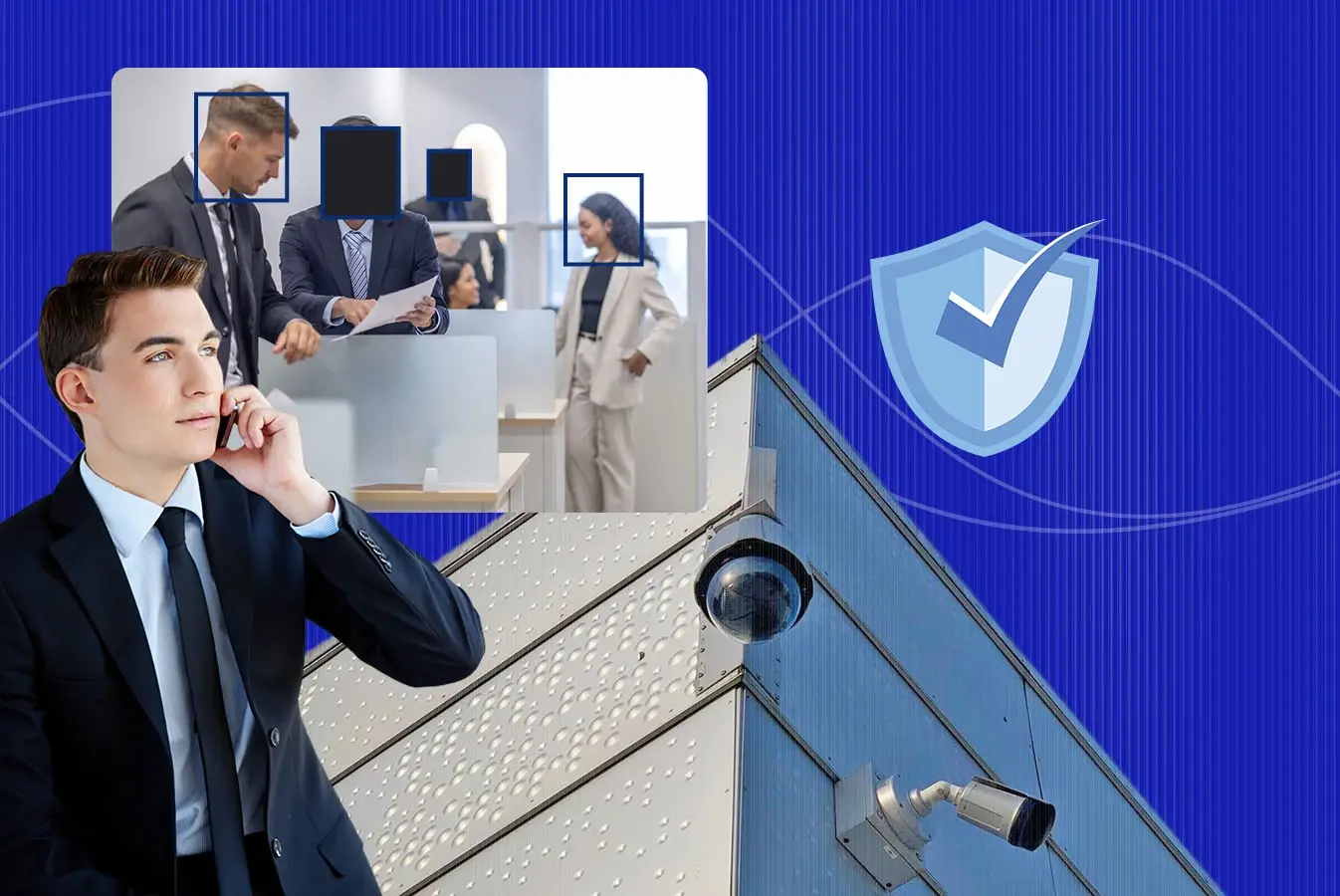Financial crimes are giving banks a run for their money. More security against financial loss means more installments of bank security cameras, digital security protocols, strict access to confidential files, and other sophisticated functionalities provided by AI.
As virtual engagements through video conferencing become commonplace, the risks of hacking confidential information also rise. This is opening opportunities for cloud computing, storage and digital evidence management solution providers, while financial services players are giving special attention to their customer’s data privacy.
It takes years to build trust with your loyal customer base but breaking it can happen overnight. So, what kind of customer data do bank security cameras record and how to hide it without deleting it?
Communication is Key to Financial Success

Video is no longer restricted for security purposes. The global pandemic (COVID 19) has accelerated the widespread use of video conferencing and video chat tools. Target markets like the millennials demand to do financial transactions remotely now.
On the legal side, audio and video data are growing at a rapid pace with risks of customers’ private information looming over bankers’ heads. CCTV surveillance, transaction calls done through audio calls and zoom meetings are recording more than just spoken words and faces. They are recording information which is becoming a pool for cyberhackers to hack.
We are talking about account information, addresses, contact details, passwords, and a host of minute details recorded by audiovisual calls and bank security cameras which can link back to the individual and/or one’s finances like PII (personally identifiable information) and PCI (payment card information) data.

Learn More: Artificial Intelligence capabilities
Learn More: Redaction capabilities
How is PII & PCI Data Recorded?
Bank Security Cameras Footage
Nowadays, it is commonplace to find a CCTV camera in any commercial corner. Even in a tight space such as in ATM booths.
There is more to data than just names, contact details and email addresses. All recorded video data that can be traced back to an individual’s identity such as faces, bodies, license plates, addresses, scars, tattoos, a symbol on clothes, armed weapons, etc. are part of personally identifiable information (PII).
Scenarios occur where customers are typing their pin codes in ATM booths, parking their vehicles where license plates are near the camera’s proximity, counting the money at the counter, or when there is a robbery where multiple innocent bystanders are in a single place.

During Transaction Calls
Video usage is growing. Customers are doing business with banks virtually through video conferencing tools and audio calls. Aside from footage from bank security cameras, any data (be it in the video, audio or image format) containing accountholders' number, ID or passport number, phone numbers, email addresses, pin codes, etc. is part of payment card information (PCI).
Businesses, like banks, that handle payments and receipts through credit cards must meet PCI DSS requirements. Global financial regulatory has made it mandatory to record and transcribe all audio calls. Imagine spending time after the call just to organize your audiovisual library and start transcribing, only to be distracted by another call!
Any unprotected PII and PCI data that is shared by outsiders or unauthorized users will lead to a breach in data privacy compliance.
Compliance Fines Burn Holes in Your Pockets
Breaking the law, negligence to mitigate the damage which occurred, or private data not hidden within bank security cameras footage or audio calls before distribution can raise the penalties:
- For severe violations, Article 83(5) GDPR states that fines can be up to 20 million euros ($23.5 million).
- For lesser violations, Article 83(4) GDPR sets fines of up to 10 million euros ($11.7 million).

That is why banks are obligated to bear the administrative and legal burden to do audio and video redactions. After all, people’s money is involved!
How to Hide Customer’s Private Data?
The process of masking or hiding sensitive information is called redaction. Without automation, most businesses are performing audio and video redactions haphazardly. Manual editing or doing through outdated technology is a painstaking process.
The administrative burden only escalates when a minor mistake in audio calls or bank security cameras’ footage, to leave private data unredacted before meeting FOIA disclosure requests (SAR requests in the UK), leads to imminent public lawsuits and GDPR/CCPA compliance violations.
We Earn Our Future. Let Us Earn Your Trust in Audio & Video Redaction
Using a robust AI to accelerate the redaction workflows, VIDIZMO Digital Evidence Management Systems (DEMS) allows you to free up resources and time so that you can focus on more critical tasks that directly impact customer experience.
Perform rapid redactions, not just on bank security cameras footage, but protect bystander’s identities within body-worn cameras, dashcams, drone cams, smartphones, etc. You can mute or bleep audio call segments with sensitive PCI data in a matter of clicks. Cut down review time and other administrative hassles with rapid searchability using auto tags and automatically detect faces and bodies in your bank security cameras footage. For custom objects such as tattoos, logos, license plates, etc., the system provides a manual option to mark and redact them as well.
In terms of viewing and sharing confidential information, it offers detailed sharing and access management capabilities. Decide from a single file: who can edit the files, create multiple link versions, view a certain number of times, and enable link expiry to share customer data securely.
The deal maker for VIDIZMO DEMS? It helps you build trust with your current and future customers by ensuring you meet the compliance standards.
Posted by VIDIZMO Team
We at VIDIZMO are experts in secure and compliant video streaming and digital evidence management. Our aim is to help educate such that you can better utilize your video data.




